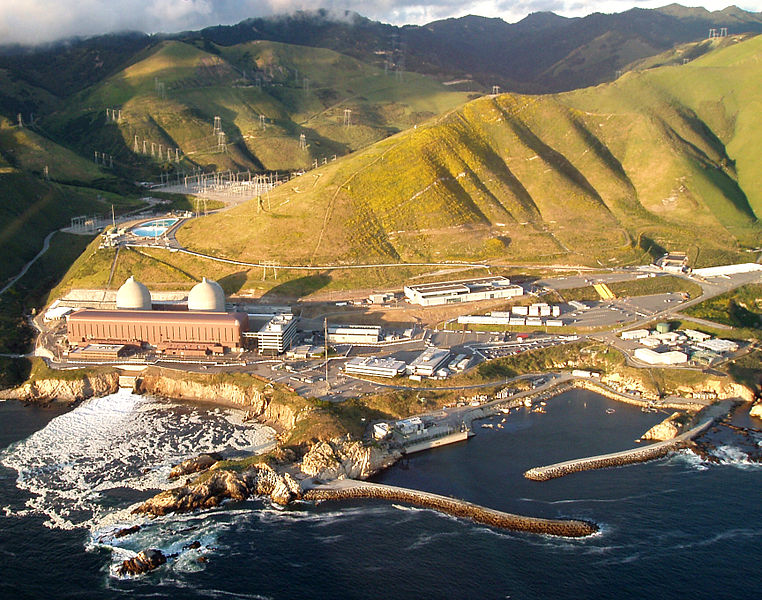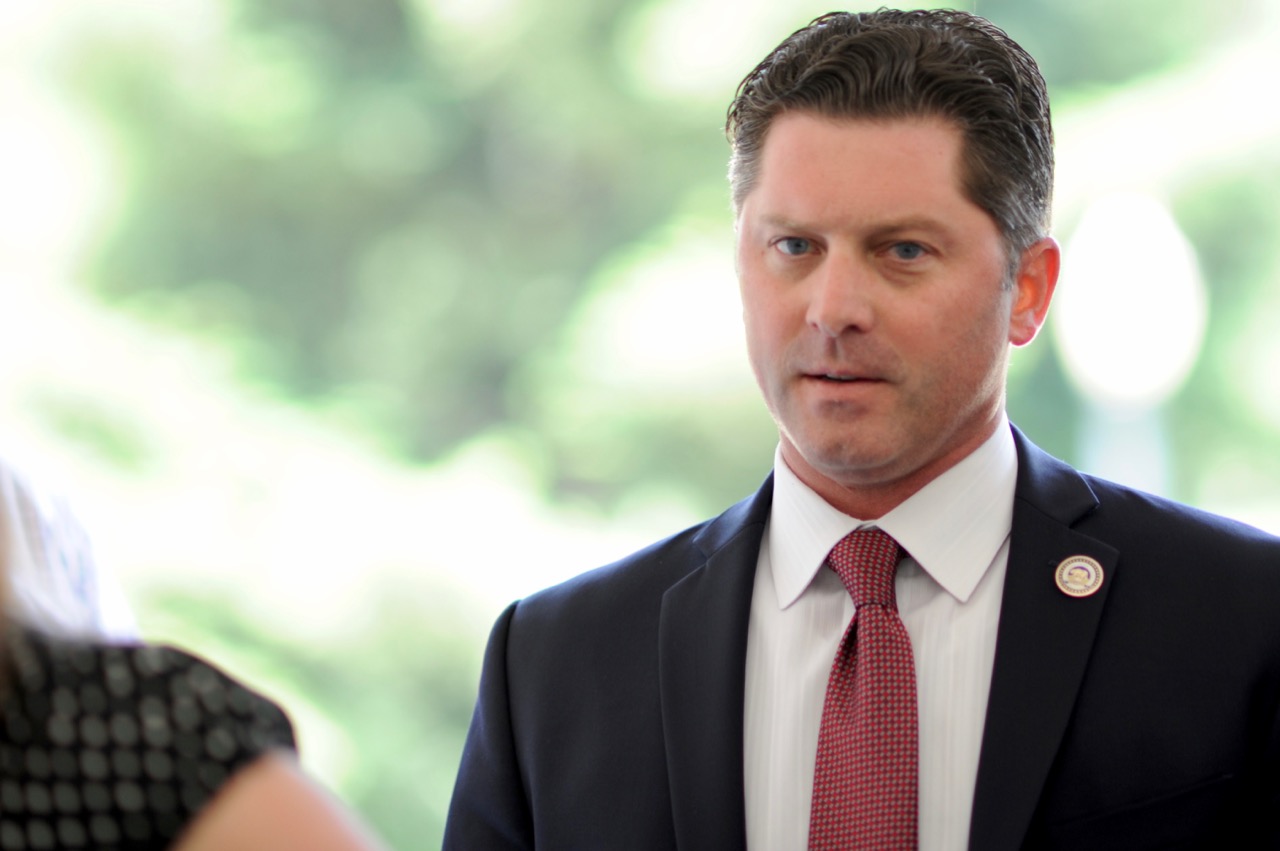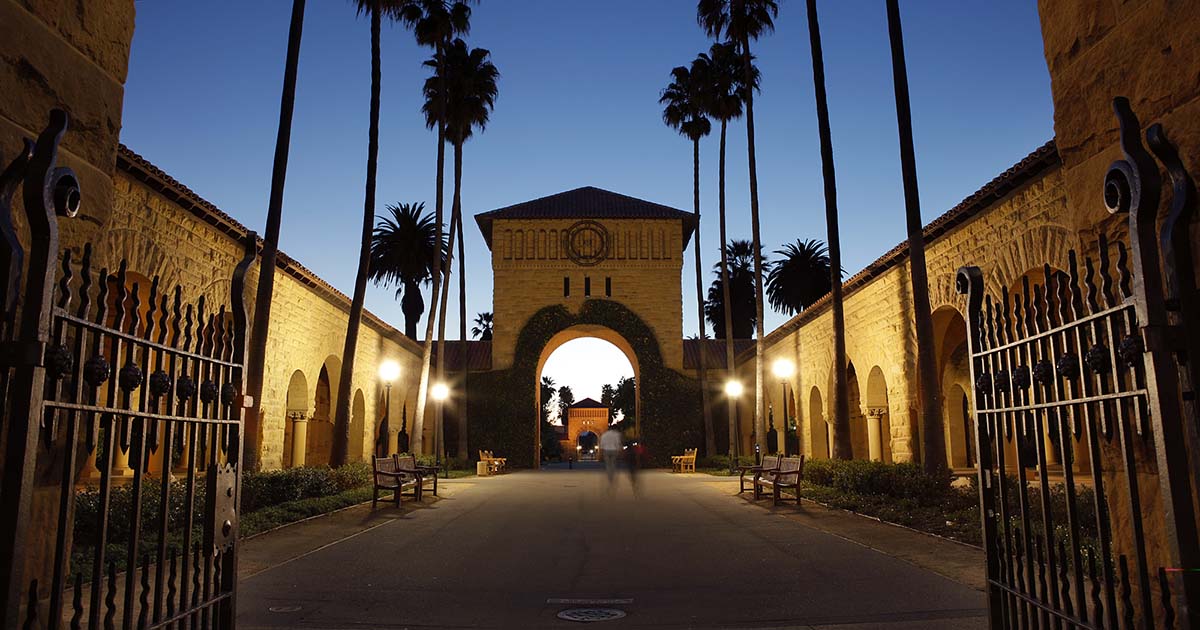
Diablo Canyon Nuclear Power Plant. (Photo: Wikipedia)
Stanford/MIT Study: Keeping Diablo Nuclear Plant Open Would Save Billions, Help Meet Emissions Goals
‘Officials so worried about power and emissions, have this gem they don’t really want anymore’
By Evan Symon, November 9, 2021 11:49 am
A new Stanford University/Massachusetts Institute of Technology (MIT) study released on Monday found that an extending the life of Diablo Canyon Nuclear Power Plant past it’s planned 2025 closure date would help the state greatly reduce carbon emissions and meet state climate goals.
Press play to hear a narrated version of this story, presented by AudioHopper.
For decades, nuclear power plants have been slowly been taken offline in California. Ever since the closure of the San Onofre nuclear plant in 2013, Diablo Canyon, located in San Luis Obispo County, has been the sole remaining power plant in the state.
Following the Fukashima Daiichi disaster in Japan in 2011, pressure from environmental and local public groups fought against keeping the plant open. Concerns over earthquakes, nuclear waste pollution, and other factors convinced the California Public Utilities Commission (CPUC) to close the plant by 2025.
While legislators have been scrambling to keep it open, largely due to California being behind on green power generation and the plant accounting for 8% of all power generated in the state, it is still on track to close by mid-decade.
The Stanford/MIT Study released Monday bucked the recent trend of moving away from nuclear power, finding that keeping Diablo Canyon open until 2045 would not only help power and environmental concerns, but could also significantly help California battle drought in the future.
According to the report, extending the life of the plant would save $21 billion in power systems costs, would give more time for California to build up green energy plants, would help California meet the growing demand of power provided to electric vehicles, reduce power sector carbon emissions by 10%, and largely prevent brownouts in the future.
“Delaying the retirement of Diablo Canyon to 2035 would reduce California power sector carbon emissions by more than 10% from 2017 levels and reduce reliance on gas, save $2.6 Billion in power system costs, and bolster system reliability to mitigate brownouts,” noted the study. “If operated to 2045 and beyond, Diablo Canyon could save up to $21 Billion in power system costs and spare 90,000 acres of land from use for energy production, while meeting coastal protection requirements.”
The additional, unplanned energy, if linked to a new desalination and/or hydrogen plant, would also provide more fresh water being brought back into reservoirs than any current state plan and would drastically reduce green energy costs while working on far less needed land for future green energy production.
Positives, negatives of keeping Diablo Canyon open until 2045
The report also hinted at a possible return of more nuclear plants allowing for more of an ease into California’s 2045 carbon emission-free power goal.
“In order to combat climate change in the best possible way, I think nuclear power is something that we should really consider and ask PG&E to reconsider,” said former Secretary of Energy and current Stanford Professor Steven Chu. “When Japan and Germany shut nuclear power plants in recent years it led to a rise in carbon emissions from fossil fuels.”
Other experts agree that keeping Diablo Canyon open would bring vastly more positives than negatives.
“Our nuclear energy technology has greatly reduced the chances of a meltdown or a similar disaster from occurring,” said Sal Braith, a nuclear engineer who worked at several nuclear plants in the Northeast, in a Globe interview on Tuesday. “All the big incidents people think of, like Three Mile Island, or Chernobyl, or Fukashima, they were all in plants with older technology. Upgrading Diablo Canyon, which still has a sound design that still holds up today, would do wonders for California. They’re so worried about power and emissions in the future, well, they have this gem they don’t really want anymore. The solution to their problems is literally right there.”
“And everything the report brings up, like lowering emissions and connecting to other environmentally friendly things, we’ve been screaming that for years for states to pick up on that. California has an easier time for emissions goals to be met, it staves off power concerns for awhile, the water crisis is largely alleviated, and a lot of jobs are created. And if more are built, it only increases those by many-fold.”
However, environmental opponents stressed that even with the report showing many positives, the negatives are still too much for any kind of reconsideration.
“It is enticing, I have to admit that,” said Melissa Key, an environmental lawyer who has represented environmental groups against energy companies with nuclear power plants in the past, to the Globe on Tuesday. “But every year of operation means the greater chance of something going wrong. And I don’t think that I even need to tell you the dangers of what a major nuclear accident, especially one so close to fault lines, can do.”
“This is the last one in the state, and for the good of California, it needs to stop. Solar, wind, and other energies will be able to pick up the slack by 2025.”
As of Tuesday, the Stanford/MIT has yet to illicit a response from California energy officials.
- Bill to Require Law Enforcement Disclosure if AI Was Used To Help Write Reports - August 7, 2025
- Gov. Newsom Files FOIA Request To ‘Expose True Cost’ Of L.A. Federal Troop Deployment for Anti-ICE Riots - August 6, 2025
- California Redistricting: How Newsom’s Plan Will Demolish Hard Fought GOP Gains - August 6, 2025





Yes, wind, solar and other “energies” can pick up the slack between 9:00 a.m. to 4:00p.m. in the summer months, in the evenings and during the winter, well, we will figure that out once we take down Diablo Canyon????????
Never mind the great minds at Stanford or MIT!
LIGHTS OUT CALIFORNIA.
No kidding, Cali Girl. And has there ever been anything more insane than shutting down Diablo while simultaneously trying to ramp up electric vehicles and all-electric homes?
Wait, I take that back, in CA we can probably think of a few hundred other items that are even more insane than that.
I’ve changed my mind on the nuclear power issue. There are a-lot of unanswered questions about Fukushima (especially since reactor 4 was defueled and powered down – so how did it blow up?). There are security issues with the technology – infiltration and sabotage or even a hostile missile or explosion hitting it. Then, there’s the unsolved nuclear waste issue. Add to that stuxnet – a nation state computer virus that can cause a nuclear facility to have problems …. Diablo Canyon is not worth the risk. It is some of the most beautiful land on the planet, and I would hate to see the region become an exclusion zone.
Fukushima emergency units didn’t work as were flooded because sea walls were not high enough and they knew they were too low based on historical tsunami records.
“The amount of energy trapped inside Earth is staggering. The temperature at the center of Earth (about 4,000 miles below the surface) is about the same as at the surface of the sun—about 6,000ºC. The Union of Concerned Scientists observes that “the amount of heat within 10,000 meters (about 33,000 feet) of Earth’s surface contains 50,000 times more energy than all the oil and natural gas resources in the world.” This heat is continually replenished by decaying radioactive elements within Earth’s interior at a rate of 44.2 TW, itself about twice humanity’s rate of primary energy consumption. Subsurface heat is a virtually inexhaustible resource that will last for billions of years.” -Eli Dourado, City Journal, May ‘21.
This is the answer. Good old planet earth!
I admit that there is always a risk with nuclear, but this design apparently minimized the melt-down issue. Nuclear waste is still with us but manageable. But in spite of unproven statements that renewables will save the day, “solar, wind and other energies” have a fatal flaw; they are intermittent and need electrical storage for nights and low wind days. That’s a fact and it much, much worse in the winter when the days are short and the wind blows less. Storage – IE batteries – is the elephant in the room.
Battery costs have indeed gone down the last 10 years, maybe by 80%, but they need to go down by another 80% to be even remotely cost effective. That may take 20 years and it could take a lot longer. Maybe they’re never be cost effective. The last time I did a back of napkin calculation, the cost of batteries for California along was over $5 trillion. The US was approaching $100 trillion. Even tax loving California cannot stomach that.
When the renewable center of the universe (Calif) has to commission 4 fossil fuel generators as it did recently to provide backup power to all those solar and wind farms, you know it’s not easy. They were loath to have to do that.
Nuclear can (and should) save the day until the storage thing is figured out. Nevertheless, I suspect that fossil fuels will be with us for a long time, right into the next mini ice age.
This seems to be a hail Mary attempt to keep the plant open. The plant is closing because the $8-$15 billion cost of replacing the cooling towers is too high, and replacing the cooling towers was already determined to be the only way to keep the plant open. The out-of-touch authors brush over this requirement. They also ignore the fact that the transmission lines for DC are already slated to be used for offshore wind, so they want to slow down real clean, renewable, zero carbon, zero heat, zero water vapor energy to ensure the continuation of risky energy and more radioactive waste, uranium mining, direct heat and water vapor emissions from the reactor and carbon dioxide emissions from refining and mining uranium
There are no cooling towers at DCPP. I live in San Luis Obispo county where the plant is located and it would seem YOU are the out-of-touch one. You talk about all the pollution to mine uranium yet it’s nothing like the pollution to mine lithium and there is no recycling it. Used fuel from reactors could be reprocessed and used over and over yet no one is talking about it. We can blame the Carter administration for that nice convenience and the stockpiles of waste. Save Diablo Canyon, NOW!
In place of Diablo Morro Bay is the replacement site of the World’s Largest Battery Energy Storage System of Lithium 273,000sq/ft right on the ocean. What would happen to this area if these batteries blew up or the Sea Level got to HIGH. If you’ve live Morro Bay you dam well better be prepared if something goes WRONG. These batteries experience ” Thermal Runaway ” and can catch fire or explode. No amount of water would put this fire out. Moss Landing had a Incident one year after start up whe Battery rack heated up and almost caught fire. Imagine the same thing in Morro Bay were to happen when the batteries are fully charged. These batteries will be housed in a facility and if a battery caught fire and cascaded into other batteries the potential of an explosion would be massive like what happened in Beirut wiping out an entire sea port. These Battery systems should be far away from the public and away from the ocean. I wish people would do their research instead of going along with the project because they hear the word GREEN!